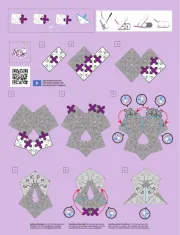Crown DRN-16 Handleiding
Crown
Niet gecategoriseerd
DRN-16
Bekijk gratis de handleiding van Crown DRN-16 (3 pagina’s), behorend tot de categorie Niet gecategoriseerd. Deze gids werd als nuttig beoordeeld door 130 mensen en kreeg gemiddeld 4.3 sterren uit 65.5 reviews. Heb je een vraag over Crown DRN-16 of wil je andere gebruikers van dit product iets vragen? Stel een vraag
Pagina 1/3

@crown® * System® Quick Reference
IQ-DRN16 DRONE
screws. At the rear of the cage a terminal
board (“T-board”) is used to provide connec-
tion to external input and output devices. The
T-board for the Drone is shown on the follow-
ing page.
Front Panel
The front panel for the Drone is shown to the
left. A DSPI indicator lights up to indicate that
digital information addressed to that unit is
being received. It also has a power indicator
showing that the unit is powered by +12 VDC.
A. Baud Switches
SW1 on the Drone module is a four position
DIP switch used to set the RS232/422 baud
rate. The Drone supports from 1200 to 38400
baud. Note: Some PCs do not support greater
than 9600 baud.
B. IQ Address Switches
Drones, like all IQ System components, must
have a valid IQ Address in order to commu-
nicate a computer or other system compo-
nents. A valid address is an address ranging
from 1 to 250, with no other Drones having
the same IQ Address in the same system.
C. Battery Backup
The battery on the Drone allows it to main-
tain its programming for up to 30 days after
Overview
The Drone is a general purpose IQ command
and control module. It accepts a variety of
types of external stimuli and converts them
into commands for various other IQ compo-
nents in the system. It is a modular unit de-
signed for mounting in the IQ-CAG Card
Cage. It operates on a nominal +12 VDC, and
includes 30 day battery backup. It is
equipped to communicate directly with a
computer via female DB9 serial port (RS232/
RS422). As a system interface it supports two
Crown Bus serial data loops. It is pro-
grammed via graphic objects or text oriented
screens in the IQ-MSD Turbo 1.2 (or higher)
program.
IQ-CAG Card Cage Installation
The Drone designed for easy installation into
the IQ Card Cage. The IQ-CAG is a four rack
space cage which is segregated into 14 1.25
inch widths. The Drone is three widths (3.75
inches wide). The IQ-LPS +12 VDC Linear
Power Supply is another Card Cage unit, and
provides power supply voltage for Card Cage
components, including the Drone. If an IQ-
LPS is not used, another suitable supply such
as an adaptor or battery is required. Compo-
nents designed to mount in the IQ-CAG are
modular in construction. They slide into the
cage on rails, and are held in place by small
DRONE
POWER
1718 W. Mishawaka Rd.
Elkhart, IN 46517 U.S.A.
DSPI
1 2 3 4 5 6 7 8
A
1 2 3 4
BC
DRONE MODULE CIRCUIT BOARD
IQ-DRN16 DRONE

+IN1
-IN1
+IN2
-IN2
+IN3
-IN3
+IN4
-IN4
IN 5
IN 6
+10V
+10V
+10V
OUT1
OUT2
AUXIN 1
AUXIN 2
AUXIN 3
AUXIN 4
AUXIN 5
AUXIN 6
AUXIN 7
AUXIN 8
AUXOUT 1
AUXOUT 2
AUXOUT 3
AUXOUT 4
AUXOUT 5
AUXOUT 6
AUXOUT 7
AUXOUT 8
CHASSIS GROUNDSIGNAL COMMONCOMSIGNAL COMMON
IN 7
IN 8
IN 9
IN10
IN11
IN12
IN13
IN14
IN15
IN16
+10V
+10V
+10V
OUT3
OUT4
AUXIN 9
AUXIN 10
AUXIN 11
AUXIN 12
AUXIN 13
AUXIN 14
AUXIN 15
AUXIN 16
AUXOUT 9
AUXOUT 10
AUXOUT 11
AUXOUT 12
AUXOUT 13
AUXOUT 14
AUXOUT 15
AUXOUT 16
COMSIGNAL COMMON
R7
R8
R9
R10
R11
R12
R13
R14
R15
R16
R1
R17
R2
R18
R3
R19
R4
R20
R5
R6
R21 R22 R23 R24 R28R27R26R25
C4
+
C3
+
C2
+
C1
+
C5
+
C6
+
C7
+
C8
+
+I
-I
+O
-O
+I
-I
+O
-O
CROWN
BUS
ZONE 2
SIGNAL COMMON
RS-232/RS-422
+12V+12V
GNDGND
CROWN
BUS
ZONE 1
R31
R29
R30
DRONE
T-BOARD
460004
D
F
E
J
H
L
I
M
N
G
O
K
H
I
M
N
G
O
PP
K. Phantom Power Resistors
To provide phantom power to the balanced
analog inputs for condenser microphones
involves add two 2 Kohm resistors per input.
The Drone T-board comes from the factory
with these resistors not installed.
L. Phantom Power Coupling Caps
A second modification to each balanced ana-
log input is required in order to provide phan-
tom power. Isolation capacitors are shorted
for DC coupling, but to AC couple and pro-
vide phantom the short may be removed by
Drone “T-Board” For External Connections
power is lost. It is soldered to the board for
stability. It is automatically charges whenever
the Drone is powered.
D. Power Supply Connectors
Plated holes are provided for connection of
+12 VDC and ground from an IQ-LPS or other
nominal 12 volt supply. Holes are sized to ac-
cept 8-32 screws.
E. Computer Communication
The Drone has a female DB9 serial port for
communication with a computer via RS232
or RS422. The Drone has been specially de-
signed to automatically sense and adjust for
either of these communication standards.
Since RS232 is standard on PCs, the Drone
is designed to accept commonly available
Radio Shack 26-117 RS232 cables.
F. Crown Bus Communication
The Drone supports two Crown Bus serial
data loops for control of up to 250 of each
type of IQ component per loop. The Crown
Bus is a communication standard for carry-
ing IQ command protocol. It normally oper-
ates on a 20 ma current loop, which the Drone
supports. Using external tranceivers, fiber
optic cable can also be used for long dis-
tance Crown Bus loops.
G. +10V Source
The Drone provides +10 VDC for use by ex-
ternal devices such as potentiometers. The
reason for this is to support the use of exter-
nal pots for adjusting voltage to the voltage
sensing analog inputs.
H. Unbalanced Analog Inputs
Of the Drone’s 16 analog inputs, 12 are un-
balanced (analog inputs 5 through 16). These
inputs sense an analog DC or AC voltage
from zero to the Drone input sensitivity. Input
sensitivity is factory set at +10 VDC (7.07 VAC
RMS, or +19.2 dBu). An analog input may be
a DC voltage sensed via linear potentiom-
eter, or may be an AC or audio signal.
I. Gain Set Resistors
R1 through R20 are installed gain and sensi-
tivity resistors for the analog inputs (balanced
and unbalanced). These resistor fix the sen-
sitivity of the analog inputs. They may be
changed to modify input sensitivity up or
down. They also affect gain from balanced
analog inputs to their respective analog out-
puts.
J. Balanced Analog Inputs
Analog inputs numbered 1 through 4 are
balanced. The reason for balanced inputs is
to accept balanced audio from sources such
as a microphone, as well as accept a linear
voltage sensed from an external potentiom-
eter. Phantom power (10V) is available by
modifying the Drone T-board.

clipping leads on the back of the terminal
boa d.r
M. Analog Outputs
Four unbalanced analog outputs a e p -r ro
vided. The output is taken f om the corre-r
sponding balanced inputs. The D one pro-r
vides 3.6 dB of gain f om balanced input tor
unbalanced output with the standa d factoryr
gain set esistors installed.r
N. Digital (Aux) Inputs
The Drone has 16 digital (Aux) inputs. These
inputs sense a logical high (on) or low (o f)f
condition. The D one has two modes of op-r
eration to handle the logic information sensed
at these inputs. The first is refe red to as “sim-r
plex.” In simplex mode, the individual input
is di ectly associated with a specific groupr
of whatever logical system commands you
associate with it. The second mode is called
“binar .” In the binary mode three or mo ey r
consecutive digital inputs a e grouped to-r
gethe . The group functions like a parallelr
port, looking for a binary number on the in-
puts (lowest input number is the LSB). A com-
mand set g oup is associated with each bi-r
nary numbe . The maximum number of com-r
binations, hence maximum number of unique
command g oups, depends on how manyr
digital inputs a e grouped together in a bi-r
nary channel. The last member of a binary
channel is a st obe. For example, if you wantr
a 16 bit input, you need four consecutive digi-
tal inputs in binary mode with a fifth input as
a strobe. When a binary number f om 0 to 15r
is sensed, send a logical high to the st ober
and the D one will engage whatever systemr
commands a e associated with the binaryr
number you p ovided.r
O. Digital (Aux) Outputs
In addition to 16 logic inputs, the D one alsor
has 16 logical outputs. These outputs can
drive a logical input or other device when
switched on. The D one can be programmedr
to p ovide a logical output based on almostr
any type information p ovided by the D oner r
or other system component. Output drive is
a maximum of +15V at 15 ma.
P. G ound Stripsr
A series of g ound strips are p ovided forr r
plenty of ground reference connections to
external devices such as pots, relays, LEDs,
or other devices.
Transponder Mode
To use multiple Drones in a system requi esr
that each D one operate with ransponderr T
Mode on. In this mode each Drone may only
di ectly control components connected to itsr
own Loop 2 C own Bus. Drones are inte con-r r
nected using the Loop 1 connection on each
D one. In software the loop inte connectingr r
the Drones becomes Loop 251 and the local
loop on each individual Drone takes a loop
number which is the same as that D one sr ’
add ess. This mode of operation allows ar
system to have up to 251 loops (one master
Drone loop and a transponder loop per D oner
with a maximum of 250 Drones). Note: urboT
1.3 or higher is required to support Drone
V1.1 firmware with ransponder Mode capa-T
bilit .y
Training The Drone
There a e two main ways to program a D one.r r
Both require IQ-MSD urbo 1.2 (or higher)T
software for IBM compatible PCs. The D one,r
like the SMX-6™ Mixe , has sub-block sc eensr r
whe e analog and digital input commands a er r
programmed. urbo softwa e also has spe-T r
cial objects for the D one that allow you tor
program the D one using simple screen ob-r
jects and a mouse. Once programmed, the
computer may remain if desired, or may be
completely emoved for total stand aloner
automatic operation.
Drone Intelligence (Version 1.1)
As of November 1995 D one V1.11 is avail-r
able, eplacing the original V1.0 fir rmwa e. Ther
new fi mwa e suppo ts all function and fea-r r r
tures of the first version with several valuable
additions. The D one now suppo ts opera-r r
tion as an inte face for U-Code p oducts suchr r
as the Crown PIP-D , White Instruments 5000P
Series IQ DSP products, and t.c. elect onicsr
EQ for IQ. The new Drone fi mwa e also sup-r r
ports multiple Drone system a chitectu e withr r
Transponder Mode. Other operational areas
ar re also imp oved including expansion of
paralyze capabilities.
The D one has another function as yet notr
discussed, called the paralyze command.
The paralyze command allows a digital input
(simplex mode only) to paralyze other inputs
on demand. This level of operation allows one
input to lock out another for security or other
purposes.
For additional information about the Drone,
including info mation about the next fi mwarer r
release, contact the C own echnical Sup-r T
po t G oup at 1-800-342-6939/1-219-294-r r
8200.
Additional Electrical Specifications
Dimensions: 3.75 inches (9.52 cm) wide for 3-
space IQ-CAG mounting; 7 inches (17.78 cm)
high, and 12.125 inches (30.8 cm) behind
mounting su face.r
Power Supply: +10 to +15 VDC, +12VDC nomi-
nal. Inte nal battery soldered to the moduler
provides backup for power loss up to 30
days; charges when Drone is powered. In-
te nally the D one p oduces several voltagesr r r
including +15 VDC for digital output drive,
and +10 VDC for use by exte nal cont ol de-r r
vices.
Display: Power LED shows presence of +12
VDC suppl , DSPI LED shows reception ofy
digital info mation addressed to the unit.r
Controls: An 8 segment DIP switch on the com-
ponent face of the circuit board is used to
set the IQ Address. A 4 segment DIP switch
sets the RS232/422 baud rate. Jumpers on
the module face are factory set to configu er
memor . Resistors and capacitors mountedy
on the -board a e used to set analog inputT r
gain and phantom powe .r
Serial Por :t A female DB9 serial port is p o-r
vided to accept either RS232 or RS422 for
direct communication with a compute . Ra-r
dio Shack 26-117 standa d RS232 cable isr
recommended for PCs.
Crown Bus: Two Crown Bus serial data loops
can be used via an 8 pin mini-barrier strip.
Analog Inputs: 16 analog inputs a e p ovidedr r
which can accept DC, AC, or audio for sys-
tem cont ol and command functions. Inputsr
1 th ough 4 are balanced. Phantom power isr
optional, sensitivity is changeable. Inputs 5
th ough 16 a e unbalanced, sensitivity isr r
changeable. Sensitivity is factory set to 10
VDC/7.07 AC/+19.2 dBu. F equency -V r re
sponse of all inputs is DC to 20 kHz (+0/–1
dB); with phantom enabled 16 to 20 kHz (+0/
–3 dB). Common mode ejection better thanr
–40 dB (balanced inputs). Input impedance
is 69 Kohms.
Phantom Power: +10 , requi es installation ofV r
resistors and clipping out electrical shorts
across input coupling capacitors.
Analog Outputs: Four unbalanced AC coupled
outputs a e provided, numbers cor espondr r
to balanced analog inputs. Gain factory set
to +3.6 dB ±0.5 dB. F equency response 20r
to 20 kHz (+0/–1 dB). Maximum drive is +18
dBm into 600 ohms. Less than 0.15% THD at
full output th ough the frequency range.r
Digital Inputs: 16 digital inputs for direct sim-
plex or binary input to logic command sets.
+2.5V to +15V is a digital high; –10V to +0.8V
is a digital lo . Output impedance 220 Kohmsw
from 0V to +5V input; 20 Kohm above or be-
low this range.
Digital Outputs: 16 digital outputs a e p ovidedr r
for driving external device. Output when on
is +15V at 15 ma (1 Kohm output impedance).
Finish: Smooth black powder coat.
Guaranteed Excellence
@crown
Crown International, Inc.
PO Box 1000 Elkha t, IN 46515-1000r
Ph. 800-342-6939/219-294-8200
Fax. 219-294-8301
Trademark Notice:
MRX-12,
™
MRX-24,
™
and
SMX-6
™
a e trademarks,r
and
Crown
®
and
IQ System
®
a e egistered trade-r r
marks of C own Inte national Inc.r r
Product specificaties
| Merk: | Crown |
| Categorie: | Niet gecategoriseerd |
| Model: | DRN-16 |
Heb je hulp nodig?
Als je hulp nodig hebt met Crown DRN-16 stel dan hieronder een vraag en andere gebruikers zullen je antwoorden
Handleiding Niet gecategoriseerd Crown
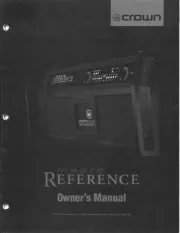
16 Maart 2025

30 November 2024

22 Maart 2024

22 Maart 2024

28 Februari 2024

14 November 2023

14 November 2023

14 November 2023

14 November 2023

14 November 2023
Handleiding Niet gecategoriseerd
- Brockhaus HEUER
- Edgestar
- VoltX
- Soundstream
- Digitus
- Laserluchs
- Auriol
- Teradek
- Trigano
- ZOTAC
- Formuler
- Stalco Perfect
- Polaroid
- Iadea
- Lifespan
Nieuwste handleidingen voor Niet gecategoriseerd
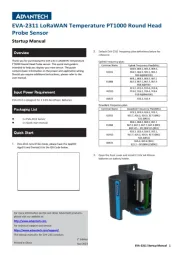
5 Augustus 2025
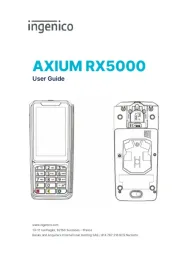
5 Augustus 2025
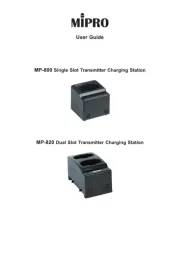
5 Augustus 2025
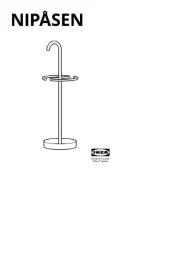
5 Augustus 2025
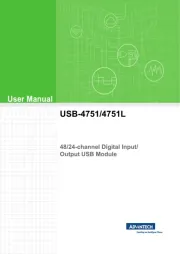
5 Augustus 2025
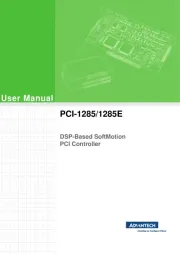
5 Augustus 2025

5 Augustus 2025

5 Augustus 2025

5 Augustus 2025
